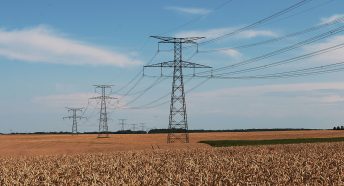Power plant approved despite impact on landscape

Plans for a combined heat and power near Sittingbourne have been approved despite its visual impact on the Saxon Shore Way.
Greg Clark, MP for Tunbridge Wells and Secretary of State for Business, Energy and Industrial Strategy, announced in a letter that he would issue a development consent order for the Kemsley Mill K4 Combined Heat and Power Generating Station.
He concluded that its benefits would outweigh any potential negative visual impacts.
The order grants development consent for the construction and operation of a gas-fired combined heat and power generating station with a gross electricity-generating capacity of up to 73MW; it will be built within the boundary of Kemsley Paper Mill.
The letter said that a planning inspector had examined the application and concluded that “the potential adverse visual and landscape impacts of the proposed development when viewed from certain vantage points along the Saxon Shore Way… cannot be entirely mitigated”.
The applicant had apparently “assessed that while there would be no significant adverse visual or landscape impacts from individual locations in the vicinity of the development, a person walking along the Saxon Shore Way designated footpath would encounter a much greater degree of impact”.
The applicant “did not offer any mitigation as it felt that it would not be possible to achieve a meaningful reduction in impact”.
The letter added that Mr Clark had noted that a report from Swale Borough Council concluded that the development “would not add any adverse visual or landscape effects to the existing industrial cluster of buildings”.
“The [inspector] also notes that the design features of the development – including the colour scheme – would be subject to approval by Swale Borough Council and that the final agreed design might lead to mitigation of the impacts,” the letter continued, adding that Mr Clark agreed with the inspector that the visual and cumulative effects would not outweigh the benefits of the project.
Those benefits included “meeting national need for additional electricity generation capacity”.
Monday, July 15, 2019
- A number of important documents have yet to emerge. For example, a rigorous transport plan and a finalised air-quality assessment. The latter is critical given that allocations at Teynham will feed extra traffic into AQMAs.
- There seems to be no coherent plan for infrastructure delivery – a key component of the plan given the allocations being proposed near the already crowded Junction 7.
- There seems to have been little or no cooperation with neighbouring boroughs or even parish councils within Swale itself.
The removal of a second consultation might have been understandable if this final version of the plan were similar to that being talked about at the beginning of the consultation process. It is, however, radically different in the following ways:
- There has been a major shift in the balance of housing allocations, away from the west of the borough over to the east, especially around the historic town of Faversham. This is a move that raises many concerns.
- A new large allocation, with accompanying A2 bypass, has appeared around Teynham and Lynsted, to which we are objecting.
- Housing allocations in the AONB around Neames Forstal that were judged “unsuitable” by the council’s own officers have now appeared as part of the housing numbers.
- Most of the housing allocations being proposed are on greenfield sites, many of them on Grade 1 agricultural land – a point to which we are strongly objecting.
Concerns about the rush to submit the plan
The haste with which the plan is being prepared is especially worrying given the concentration of housing in Faversham. If the town is to take a large amount of new housing, it is imperative that the policies concerning the area are carefully worked out to preserve, as far as possible, the unique nature of the town. The rush to submit the plan is likely to prove detrimental.
As Swale does not have a five-year land housing supply, it is open to speculative development proposals, many of which would run counter to the ideas contained in the current plan. Some are already appearing. This is a common situation, and one that, doubtless, is a reason behind Swale’s haste.
Our overriding fear, however, is that this emphasis on haste is ultimately going to prove counterproductive. This is because it is our view that the plan, in its current form, is unlikely to pass independent examination. We are urging Swale to listen to and act upon the comments being made about the plan and to return the plan to the council with appropriate modifications before submitting it to the Secretary of State.
Essentially, this means treating the current consultation not as the final one but as the ‘lost’ second consultation.
The consultation ends on Friday 30 April and we strongly urge residents to make their opinions known if they have not already done so.
Further information








